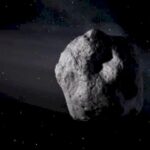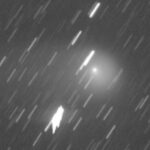
An asteroid the scale of a bus made a close-by move of Earth yesterday. Asteroid 2022 NF’s flyby was broadcast stay by The Virtual Telescope Project, and you may watch the replay beneath.
Asteroid Day is in remembrance of the anniversary of the June 30, 1908 Tunguska occasion in Siberia, which resulted in seismic shockwaves being registered as far-off as England. Over a century after the horrendous occasion, persons are nonetheless debating what brought on it. The typically agreed upon idea, nevertheless, is that a big area rock, about 120 toes throughout, entered Earth’s environment of Siberia after which detonated within the sky. The Virtual Telescope Project broadcasted the flyby of asteroid 2022 NF as a approach of remembering that disastrous day.
At its closest strategy of 56,000 miles (90,000 kilometers), 2022 NF will come inside roughly 23% of the space to our moon. While that’s thought-about to be shut by way of celestial phrases, it’s nonetheless a protected distance from Earth.
The asteroid was first noticed in 2022 and is between 18 toes and 41 toes (5.5 meters and 12.5 meters). This makes 2022 NF no less than the scale of a bus, however could possibly be as huge as a big transport container. Technically talking, that dimension isn’t categorized as a “potentially hazardous asteroid”, based on the metrics utilized by NASA’s Jet Propulsion Laboratory (JPL) in California.
According to JPL’s Small-Body Database, the asteroid circles the solar about each six years. As of now, NASA and different businesses have discovered no imminent threats to be involved about by way of massive asteroids that might impression Earth. However, the area businesses preserve a watchful eye on the sky, and NASA is engaged on planetary protection applied sciences as a precaution.
While the protection started yesterday on the Virtual Telescope Project’s web site, you’ll be able to watch the replay above through YouTube.
Top Image Credit: NASA/JPL









